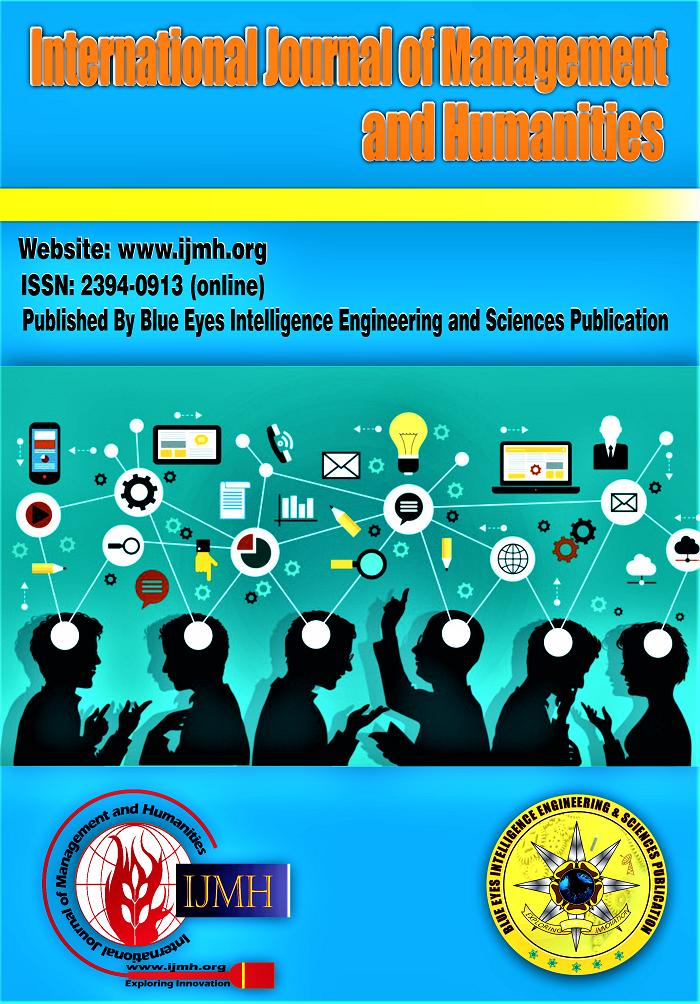An Analysis the Impact of e-HRM on Organizational Performance in Information Technology (IT) Industry in Delhi/NCR
Main Article Content
Abstract
The digital age has brought about significant changes in the business environment. The business environment and information technology (IT), one of the most important components of today's business world, are affecting the growth of many businesses. At the management level, IT plays a special role in people management. Electronic Human Resource Management (e-HRM) is a concept that involves the use of web technologies for the provision of services related to human resource management in organizations. The purpose of this article is to highlight the importance of the concept of e-HRM, its most important features, advantages, potential disadvantages and to guide the implementation of e-HRM in Delhi/National Capital Region (NCR). The approach of this paper includes theoretical analysis of existing literature and literature on e-HRM and data analysis on e-HRM implementation by organizations in Delhi. Use SPSS software to analyse the data. It pointed out that eenergy users management is a new development that supports, enhances and supports people management both in terms of people management and leader leadership and personnel.
Downloads
Article Details
How to Cite
References
Bondarouk, T., & Brewster, C. (2016). Conceptualising the future of HRM and technology research. The International Journal of Human Resource Management, 27 (21), 2652-2671. DOI: https://doi.org/10.1080/09585192.2016.1232296
Kaur, P. (2013). E-HRM: A Boon or Bane? Anveshanam - A National Journal of Management, 1 (1), 35-38. http://journalglobal.in/uploads/paper/21.pdf
Lazarova, M., Morley, M., & Tyson, S. (2008). International comparative studies in HRM and performance–the Cranet data: Introduction. The International Journal of Human Resource Management, 19 (11), 1995-2003. DOI: https://doi.org/10.1080/09585190802404239
Obeidat, S. M. (2016). The link between e-HRM use and HRM effectiveness: an empirical study. Personnel Review, 45 (6), 1281-1301. DOI: https://doi.org/10.1108/PR-04-2015-0111
Slavić, A., & Berber, N. (2013). The Role of Human Resource Information Systems in EU based on CRANET research. International Conference International Conference on Applied Internet and Information Technologies ICAIIT (pp. 238-243). Zrenjanin: University of Novi Sad, Technical Faculty ”Mihajlo Pupin”. https://ef.uns.ac.rs/cranet/download/publikacije_EF-Su_2009_2013/16_IMSEMC_2013_HRIS.pdf
Strohmeier, S. (2007). Research in e-HRM: Review and implications. Human Resource Management Review, 17 (1), 19-37. DOI: https://doi.org/10.1016/j.hrmr.2006.11.002
Tansley, C., Newell, S., & Williams, H. (2001). Effecting HRM-style practices through an integrated human resource information system. Personnel Review, 30 (3), 351-370. DOI: https://doi.org/10.1108/00483480110385870
Voermans, M., & Van Veldhoven, M. (2007). Attitude towards e-HRM: An empirical study at Philips. Personnel Review, 36 (6), 887-902. DOI: http://dx.doi.org/10.1108/00483480710822418
Ruеl, H., Bondarouk, T., & Looise, J. K. (2004). E-HRM: Innovation or irritation. An explorative empirical study in five large companies in web-based HRM. Management Review, 15 (4), 364-379. https://www.econstor.eu/bitstream/10419/78883/1/755420500.pdf
Srihari S, Subhasree Kar, E- HRM Practices in the IT Industry with Special Reference to the State of Karnataka. (2019). In International Journal of Recent Technology and Engineering (Vol. 8, Issue 3S3, pp. 249–253). DOI: https://doi.org/10.35940/ijrte.c1060.1183s319
Shanmugapriya, M. M., & Venkatramaraju, Dr. D. (2023). Factors Influencing E HRM Practices and Organisational Performance in it and it Es Industries. In International Journal of Inventive Engineering and Sciences (Vol. 10, Issue 12, pp. 1–12). DOI: https://doi.org/10.35940/ijies.d7933.12101223
Paul, Dr. P., Giri, Dr. A., Chatterjee, S., & Biswas, S. (2019). Determining the Effectiveness of ‘Cloud Computing’ on Human Resource Management by Structural Equation Modeling (SEM) in Manufacturing Sector of West Bengal, India. In International Journal of Innovative Technology and Exploring Engineering (Vol. 8, Issue 10, pp. 1937–1942). DOI: https://doi.org/10.35940/ijitee.j9276.0881019
Anupa, M. (2021). Role of Human Resources Information System (Hris) in Accelerating Organizational Effectiveness – It Companies Perspective. In International Journal of Management and Humanities (Vol. 5, Issue 6, pp. 22–25). DOI: https://doi.org/10.35940/ijmh.f1245.025621
Kiran, P. V. S., & Faisal, A. M. (2019). Implementation of Technology Such As Enterprises Resource Planning ERP Through Integration of Human Capital with Quality using Analytic Hierarchical Process AHP. In International Journal of Engineering and Advanced Technology (Vol. 9, Issue 2, pp. 1443–1446). DOI: https://doi.org/10.35940/ijeat.b3350.129219





